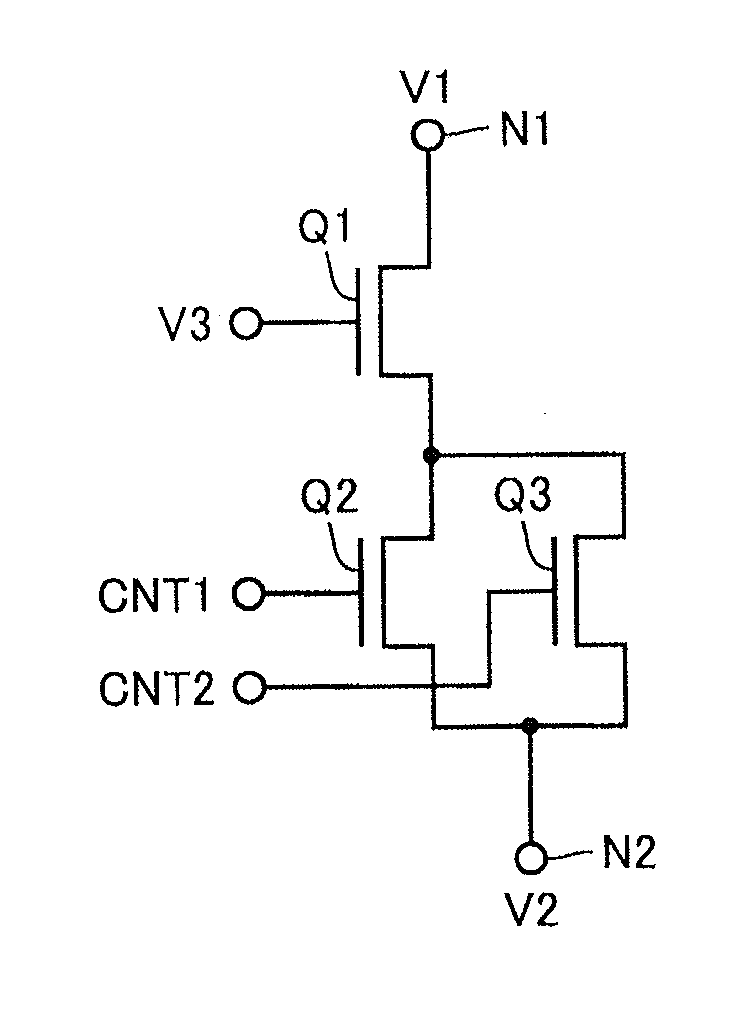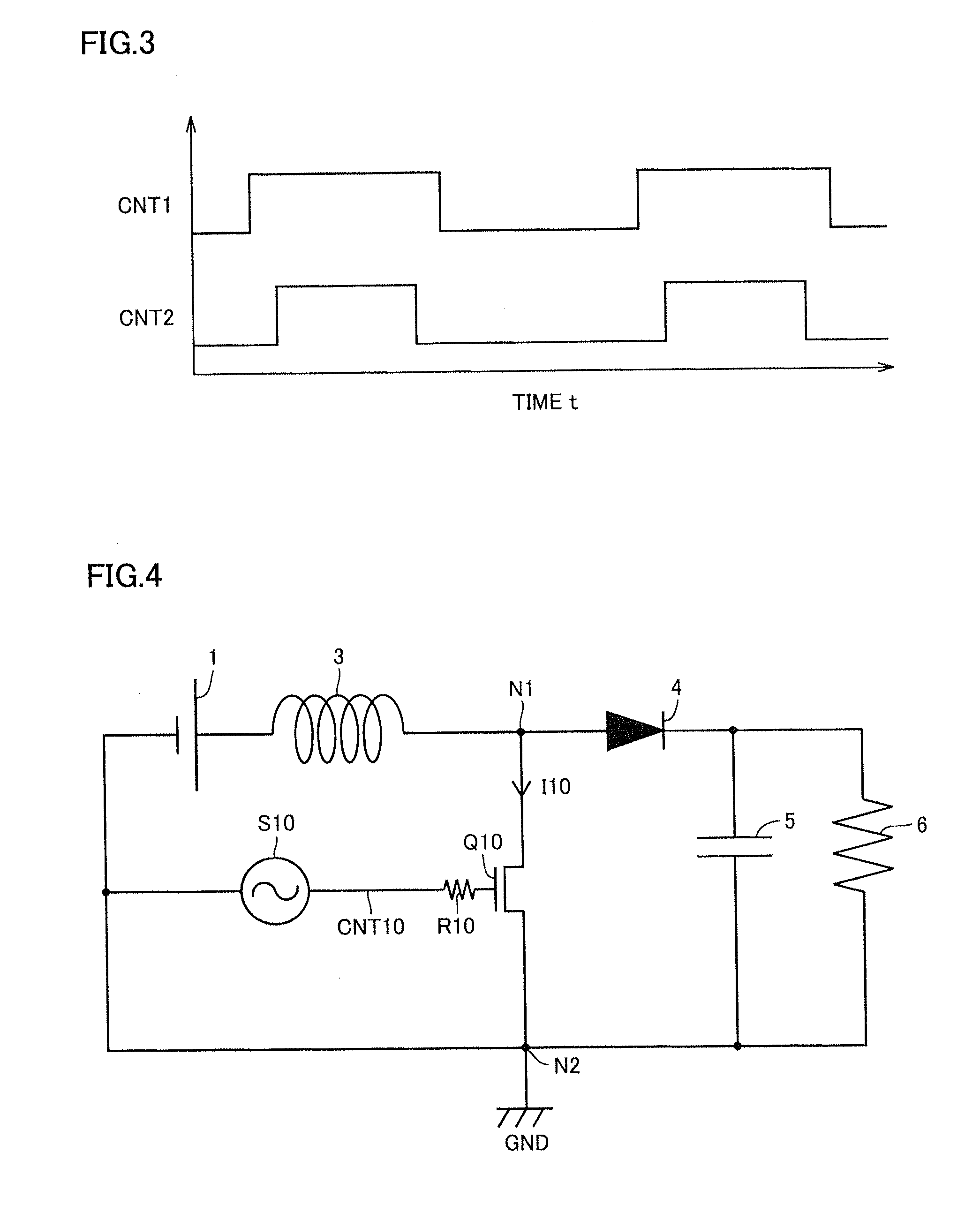Semiconductor device, and inverter, converter and power conversion device employing the same
- Summary
- Abstract
- Description
- Claims
- Application Information
AI Technical Summary
Benefits of technology
Problems solved by technology
Method used
Image
Examples
first embodiment
[0043]A first embodiment provides a semiconductor device including: a first transistor having a drain connected to a first node; a second transistor having a drain connected to a source of the first transistor, and a source connected to a second node; and a third transistor connected to the second transistor in parallel, the first transistor having a source-drain breakdown voltage higher than those of the second and third transistors, the second transistor having a transconductance smaller than that of the third transistor. Hereinafter, the semiconductor device of the first embodiment will be described in detail with reference to the drawings.
[0044]As shown in FIG. 1, the semiconductor device of the first embodiment includes n channel MOS transistors Q1 and Q2 connected in series between a node N1 and a node N2, and an n channel MOS transistor Q3 connected to n channel MOS transistor Q2 in parallel.
[0045]Transistor Q1 is a high breakdown voltage transistor, and transistors Q2 and Q3...
second embodiment
[0075]FIG. 9 is a circuit diagram showing a configuration of a semiconductor device by a second embodiment of the present invention, as compared with FIG. 1. The FIG. 9 semiconductor device differs from the FIG. 1 semiconductor device in that the former has a normally on type transistor Q4 in place of n channel MOS transistor Q1. Normally on type transistor Q4 is implemented for example as a heterojunction field effect GaN transistor.
[0076]N channel MOS transistor Q1 has threshold voltage VTH1 having a positive value and turns off for a gate-source voltage of 0 V, and accordingly, it is referred to as a normally off type transistor. In contrast, normally on type transistor Q4 has a threshold voltage VTH4 having a negative value and turns on for the gate-source voltage of 0 V. Transistor Q4 is a high breakdown voltage, high Gm transistor.
[0077]Transistor Q4 as commercially available has threshold voltage VTH4 varying within a range of −3 V to −5 V. Transistors Q2 and Q3 as commercial...
third embodiment
[0089]A third embodiment provides a semiconductor device including a plurality of sets of first to third transistors, with a plurality of first transistors having their respective gates connected to each other, a plurality of second transistors having their respective gates connected to each other, a plurality of third transistors having their respective gates connected to each other, the plurality of first transistors having their respective sources all connected to a first node, the plurality of second transistors having their respective sources connected to the plurality of first transistors at their respective drains, respectively, the plurality of second transistors having their respective sources all connected to a second node, and the plurality of third transistors connected to the plurality of second transistors, respectively, in parallel. Hereinafter, the semiconductor device of the third embodiment will be described in detail with reference to the drawings.
[0090]FIG. 11 is...
PUM
 Login to View More
Login to View More Abstract
Description
Claims
Application Information
 Login to View More
Login to View More - R&D
- Intellectual Property
- Life Sciences
- Materials
- Tech Scout
- Unparalleled Data Quality
- Higher Quality Content
- 60% Fewer Hallucinations
Browse by: Latest US Patents, China's latest patents, Technical Efficacy Thesaurus, Application Domain, Technology Topic, Popular Technical Reports.
© 2025 PatSnap. All rights reserved.Legal|Privacy policy|Modern Slavery Act Transparency Statement|Sitemap|About US| Contact US: help@patsnap.com



